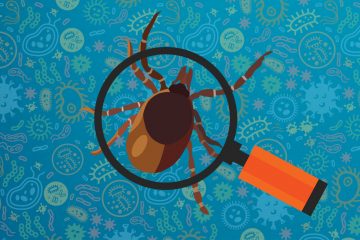 Dr. Dan Kinderlehrer practices internal medicine in Denver, Colorado. In the following excerpt from his forthcoming book, he discusses how his personal experience with Lyme disease led him to focus his medical practice on the treatment of tick-borne infections.
Dr. Dan Kinderlehrer practices internal medicine in Denver, Colorado. In the following excerpt from his forthcoming book, he discusses how his personal experience with Lyme disease led him to focus his medical practice on the treatment of tick-borne infections.
I am frequently asked how I treat Lyme disease. My answer is that I don’t—I treat people, and they are all different.
There is no cookbook, even for treating early or acute Lyme disease. Ideally patients should avoid any practitioner who uses a “one size fits all” approach. Treating Lyme patients effectively is complicated. This chapter will explain why.
Issues with acute Lyme disease
Acute Lyme disease would seem to be straightforward. A recent infection should be easily diagnosed and treated. But it often isn’t.
Here’s why:
- Many people, perhaps most, do not observe a tick attachment.
- A rash is often absent, missed, or ignored.
- The early symptoms of acute Lyme disease may be absent or mild, or self-diagnosed as the flu, and therefore ignored by the patient.
- The diagnosis of acute Lyme disease is often missed by medical practitioners.
- The standard treatment recommended for acute Lyme disease is inadequate for eradicating the infection in many people.
- Infection with the Lyme bacteria is frequently accompanied by co-infections that require different antibiotics as well as more aggressive treatment.
- Some patients who present with acute Lyme are, unwittingly, suffering from chronic tick-borne infections that were acquired at some time in the past.
- Borrelia burgdorferi (Bb) can suppress the immune system, resulting in persistent infection.
- Although acute Lyme disease is characterized as being localized to the skin, Borrelia burgdorferi can spread systemically by the time the rash appears.
- The previous chapter highlighted the several ways in which Bb has evolved to evade the immune system and resist antibiotics. In addition, not all Bb bacteria are the same; there are multiple strains of Bb, each with varying degrees of virulence and an affinity for different organs.
……Join or login below to continue reading.




























